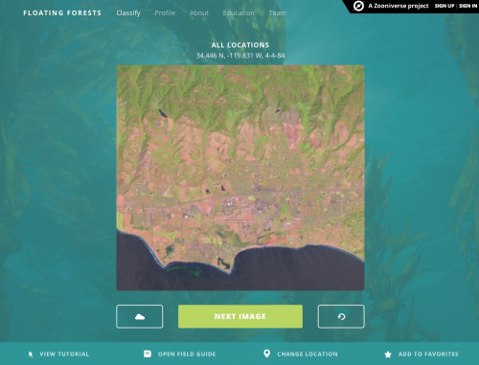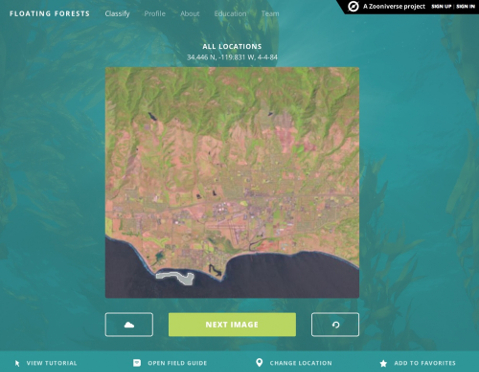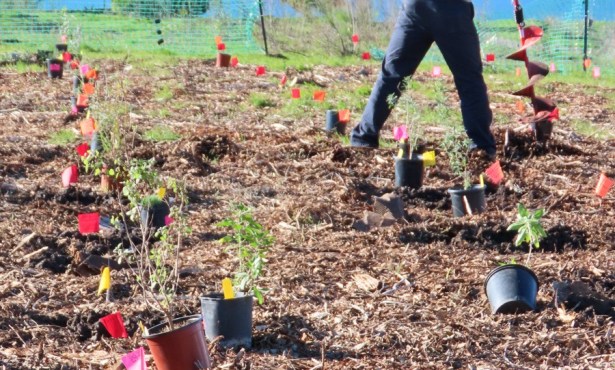Counting Kelp
Citizen Scientists' Help Sought in Climate Change Study
Great floating forests of giant kelp show up as vague green blobs in hundreds of thousands of Landsat photographs taken over the decades, offering climate scientists an ideal study subject — if they could only catalog the kelp in the multitude of photographs. Computers cannot distinguish the seaweed from sea foam in the images, but human eyes can. A pair of scientists with UC Santa Barbara roots needs your help!
The two are part of a group seeking the help of citizen scientists in new marine ecology research being conducted at FloatingForests.org. There, shoreline images from NASA Landsat satellites from 1983-2013 are posted, and visitors are asked to click on a photo, circle the kelp they see, and submit the result to the research team. It’s that simple! And it moves climate change research forward.

Jarrett Byrnes, a former postdoctoral scholar at UC Santa Barbara’s National Center for Ecological Analysis and Synthesis (NCEAS), and his colleague Kyle Cavanaugh, an assistant professor in UCLA’s Department of Geography who is also a UCSB alumnus, and their colleagues believe the Floating Forests results will reveal valuable information about how giant kelp — and the marine ecosystems they support — have survived or adjusted through the last three decades of climate change.
“Giant kelp is an incredible species,” Byrnes said. “It can grow up to a foot or two a day and forms these huge, beautiful redwood-like forests. If a forest is just recovering from a storm, swimming through it is like trekking through thick dense jungle.”

Scientists refer to kelp as a “foundation species” that provides food and shelter for all manner of herbivores from tiny shrimp to ravenous sea urchins to grazing fish. Kelp forests can dampen coastal waves as they sweep in toward shore. And their loss can have dire consequences for the health, resilience, and productivity of our coastal ecosystems.
Byrnes hopes that Floating Forests will interest students and regular folks curious about marine ecology and climate change issues. The collaborators on this project, which includes Zooniverse, have contributed to an education portal, ZooTeach, which holds teaching materials, including lesson plans and other resources.
Kelp covers 25 percent of the world’s oceans, and the initial photographs on the site show the coastlines of California and Tasmania — though the occasional cloud-covered landmass photo has fallen in there, too — and subsequent sets of images will go around the world from Chile to South Africa. With the help of citizen scientists, Byrnes and his team first plan to analyze giant kelp dynamics and canopy coverage. Once they have an accurate idea of the range of and changes in the kelp forests, they will estimate the total carbon in the giant kelp over time and across the globe, measure potential shifts near equator-ward range boundaries, and changes in seasonality and distribution over the 30-year time scale.
Let’s get to work! Check out FloatingForests.org.
Vivian A. Reed is a communications assistant at UC Santa Barbara’s NCEAS and a UCSB alumna.



